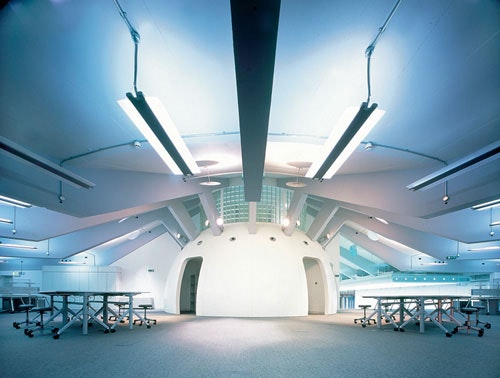He was destined for great things in the car sector, so what led David Godber to jump ship and join the Design Council? Lynda Relph-Knight talks to him about his new job and the challenges of working for a quango
David Godber is a high-flyer. It’s not just that he has made deputy chief executive of the Design Council at the age of 39, after an already illustrious career in the car industry as commercial director of both Lotus and Audi and, more recently, as director of Nissan Design Europe. It’s that when he’s not inspiring creative teams, he enjoys flying aerobatics out at Elstree in Hertfordshire.
When you meet him, you immediately realise what a great asset he is to design. The passion and enthusiasm are there in spades. ‘I love design,’ he says, with true feeling. Yet his background is as an economist, with a degree in business studies and an MBA under his belt.
By his own admission, Godber’s strength lies in ‘getting things done’. This is certainly born out by his five years at Nissan, where he was handed a building site near London’s Paddington when he joined. He has turned that into an exemplary European design hub for the Japanese car manufacturer that is cited in all the design management manuals.
At Nissan, he ran his own show, within reason, so how will he find working at the Design Council, under chief executive David Kester? ‘The job title doesn’t worry me,’ he says. ‘It’s the challenges it brings.’ He certainly anticipates lots of those at the Design Council. ‘I’m under no illusion,’ he says. ‘I have a lot to learn. When I was offered the job, the challenge was so huge I couldn’t really turn it down.’ And he knows what he’s getting into, having already had input into the Cox Review on the R&D tax credit aspects, on the Design Skills Advisory Panel and on the council’s Design Blueprint.
‘I hope it’s no different from a [private] company,’ he says of working at the Design Council, a Government-backed quango. ‘If the rules stifle you, then you’re not doing the job. It’s about stakeholder engagement. The rules are there for a reason.’
In his new role, he’ll immediately be immersed in the council’s Designing Demand programme to put design into UK business. He is also keen to engage with the regional development agencies – which he sees as ‘the channels to market’ for design in the UK – and to take the UK message to a global stage.
Challenges may be what motivate him, but Godber is not just a high achiever. He is a thoroughly decent guy as well, and has already earned the respect of many in design.
It was deemed a great coup for Jeremy Myerson and the crew at the Helen Hamlyn Centre to secure him as a speaker at its DBA Design Challenge event a couple of years ago. Former Design Council design director Richard Eisermann, a designer who has worked with the likes of Ideo and, on the client side, Whirlpool in Italy, meanwhile describes him as ‘a genius’, whose huge talent is to get the best out of design teams. This trait is likely to endear Godber greatly to members of the design community, as well as to the industrialists and public servants who he will encounter in his new role. He is a team-player, which is exactly what many of the council’s broad-reaching projects require.
‘There are a lot of great car designers,’ he explains. ‘But it’s only when they come together [with other technical experts] that they deliver a great car.’ He believes in the power of the idea, but knows that it can come from anywhere. ‘It doesn’t matter where ideas come from, as long as they come,’ he says.
Godber sees his primary role at the council as ‘creating an environment where people can do their jobs’. His brief is ‘a listening brief’, he reckons, and that brief extends beyond the council’s immediate team.
‘The Design Council can’t hope to work with every business in the UK,’ he says. ‘It’s got to be collaborative.’ It also needs to stay apolitical and be a facilitator, he believes.
With Godber on board, we can expect great things from the Design Council, not least in its dealings with the design community. His belief that ‘design is an investment with exponential potential’ will find an empathy in design that has been broadly lacking for the past couple of years.
Industrialists, meanwhile, are likely to heed his words, given his track record in business. ‘It might have limited resources,’ he says of design in industry, ‘but it’s the best bang for the buck.’ With this philosophy, everyone’s set to be a winner.

- Design disciplines in this article
- Industries in this article







